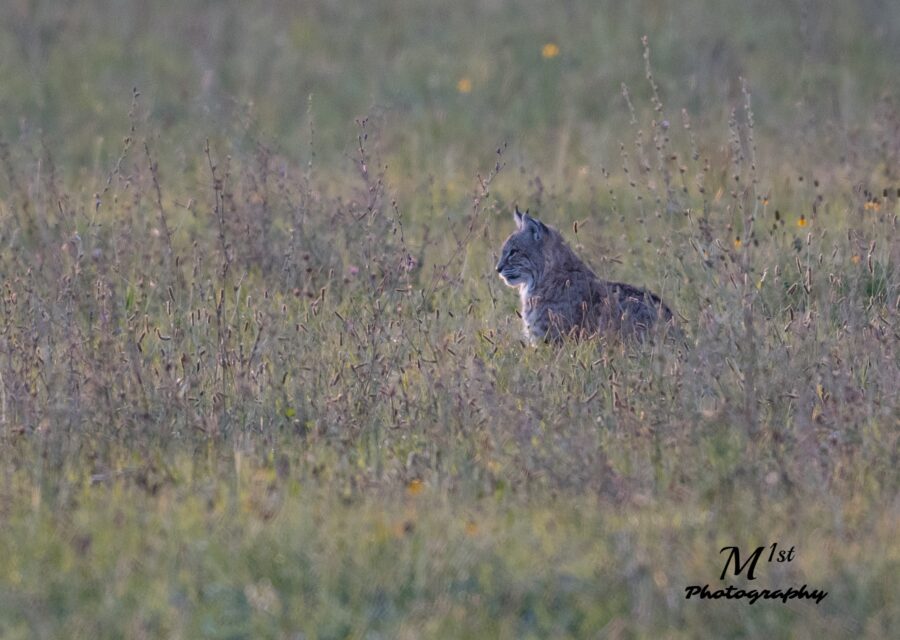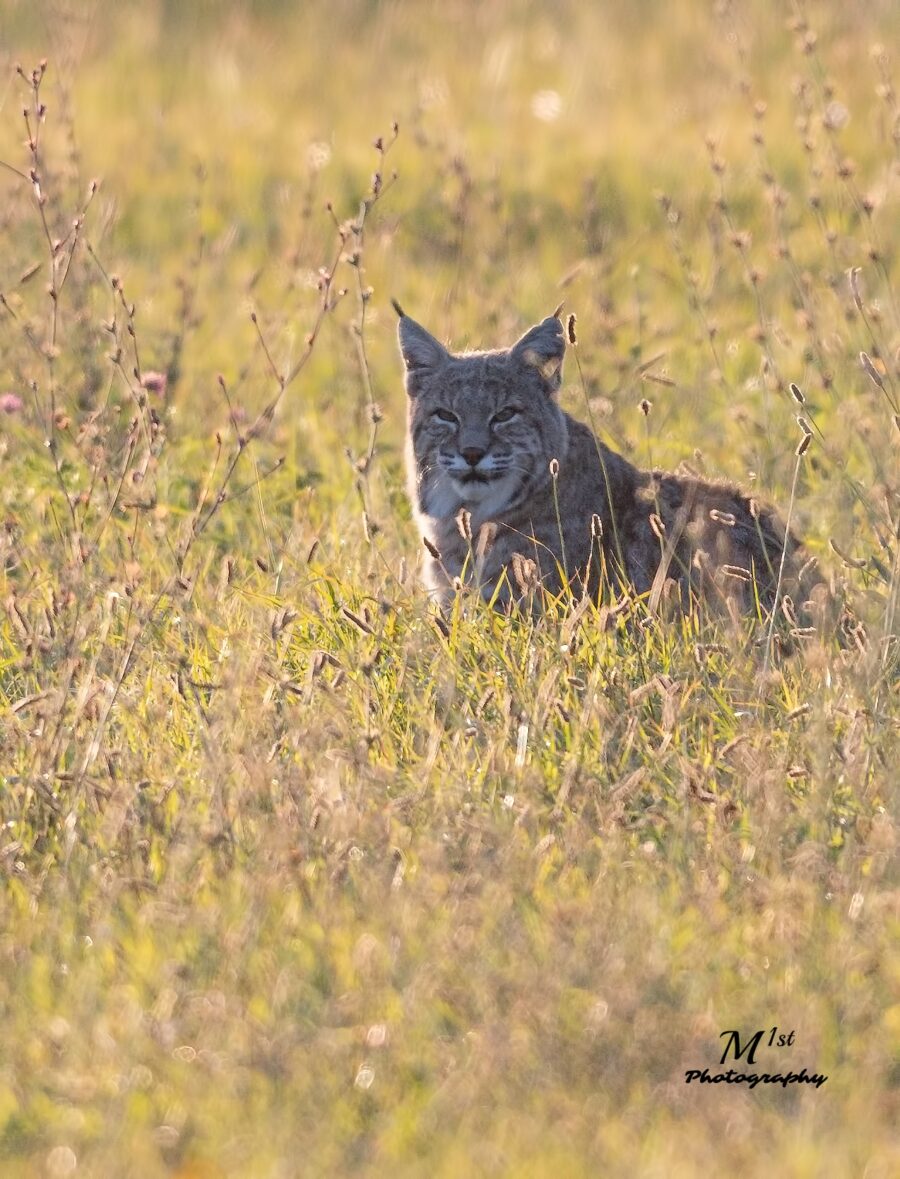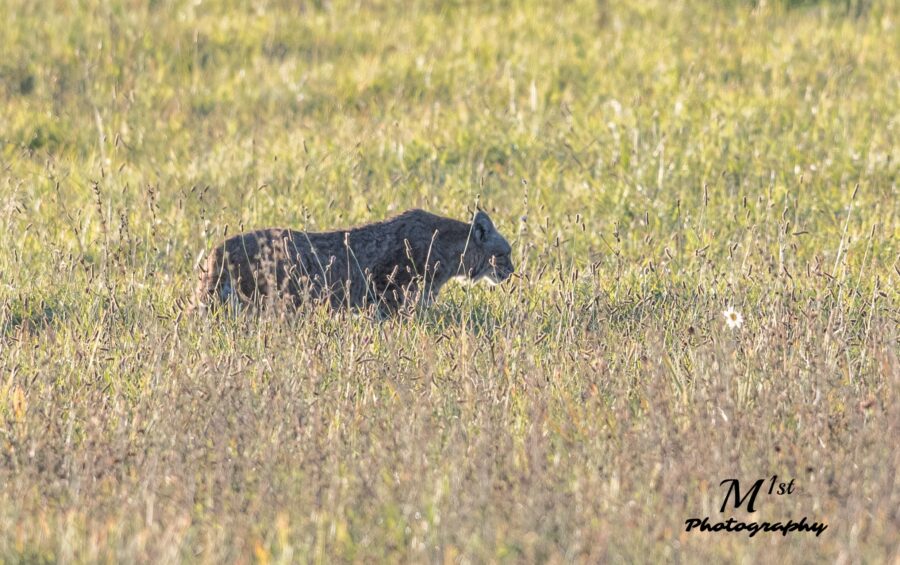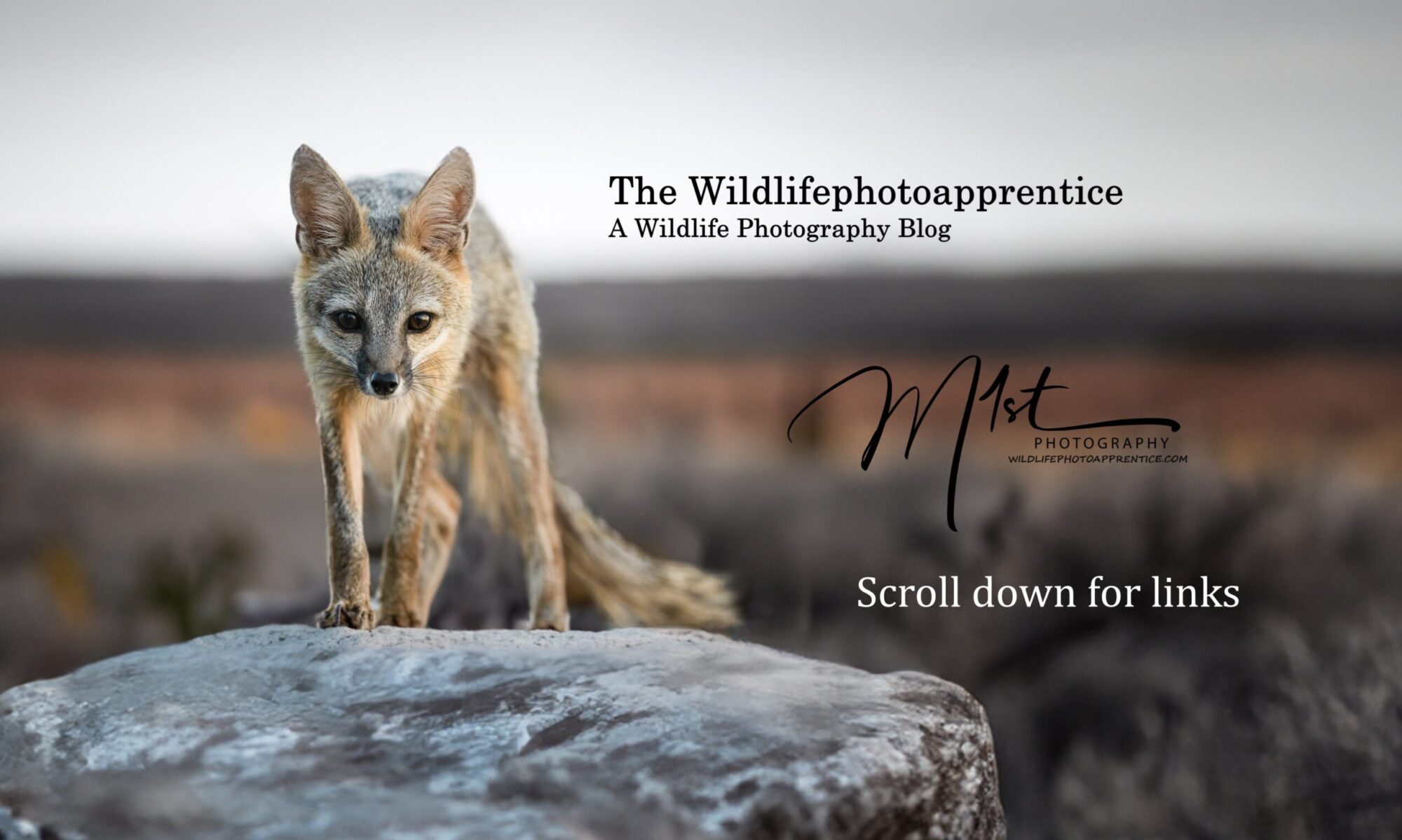I got up early in the morning as I usually do to head out before the sun came up. I like to be in position to catch the sunrise and see if any wildlife will present itself for the mornings shoot. On the two preceding mornings I was without luck and spent several hours watching small bluebirds flit in and out of the pasture I was scouting. This morning was different however. Just prior to sunrise, during that time when you don’t have enough light to actually take a photo without using an ISO so high it’s not worth it, I noticed some movement along the tree line at the distant edge of the pasture. Initially I thought it was a house cat from the farmhouse about 1000 yards away, but no, today was my lucky day, Bobcat.

Now if you’re like me, you spend hours scanning empty fields searching for animals to photograph and rarely see anything. On this day I actually saw something before it saw me. I spent the next 45 minutes attempting to stay calm and adjust my settings to capture a decent exposure before my subject discovered me and headed for the hills. Balancing ISO and shutter speed, aperture at f4 to get as much light as possible, dealing with back lighting, my head was spinning. I rattled off as many shots as I could.

Slowly the young female stalked mice but was unable to catch any. Unsatisfied with the availability of breakfast she returned to the woods.

Afterwards, back at the house, I got a cup of coffee and sat down on the couch with my daughter who was watching TV. She asked, did you see anything this morning? I said yep, I saw a bobcat. She was disappointed that she didn’t get to see it. That’s when she received my first lesson on wildlife photography. You’ll never see a Bobcat sitting on the couch.
If there is one thing that you must do to become better wildlife photographer, it is to get out where the wildlife is. Get out of the house, take a walk, and start looking for wildthings. Taking time to search the internet to find information about the subject you wish to photograph can be helpful in increasing the likelyhood you will see something when you go. Where do Bobcats live? What type of terrain? what do they eat? How do I recognize their scat or tracks? What time of year do they reproduce? Do they make sounds? Many phone apps exist to make this information readily available. Use google earth to scout likely terrain and habitat from home prior to going out. When you prepare more, you see more. When you see more, you get out more. When you get out more and see more, you photograph more. When you photograph more, you become a better wildlife photographer.
Knowing your subject well and getting out among them is the first step in becoming a wildlife photographer.
